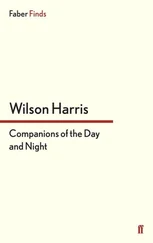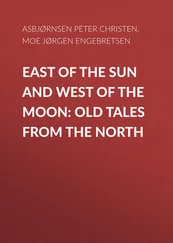Aurelian, proclaimed emperor by his troops in Moesia in September of 270 ce, refused to share his power as Zenobia had proposed and endeavored to hold and then drive back the Palmyrene troops. The Palmyrenes were forced out of Egypt (May–June of 272 ce), and then suffered defeats at Tyana (southern Cappadocia) and near Antioch, and finally near Emesa, which forced Zenobia’s troops to retreat to Palmyra which fell in August of 272 ce. Zenobia tried to flee but was caught near the Euphrates and taken as a captive to Rome. An uprising in Palmyra over the following months brought a new Roman intervention and the city was pillaged. A garrison was installed, reinforced by Diocletian, and the city lost its essential role in trading with the Persian Gulf, due in particular to clauses in the peace treaty of 298 ce that established Nisibis as the center of trade.
One can overlook the expedition launched against the Persians by Carus, accompanied by his son Numerian, in the spring or early summer of 283 ce, in spite of its success (the taking of Ctesiphon in August of 283 ce), because when Carus died at Ctesiphon, the conquests were abandoned and the army withdrew. Carus had probably wanted to take advantage of the Persian dynastic difficulties, since the sons of Shapur I were fighting each other for the throne. In March of 284 ce, Numerian returned to Emesa.
When Diocletian ascended to power, Rome governed a total of six provinces in the Near East: the three Syrias (Coele, Phoenice, and Palaestina), Arabia, and the two provinces beyond the Euphrates, Osrhoene and Mesopotamia. All of these provinces had suffered greatly from the wars with the Persians, as well as the internal struggles between competitors for the empire, especially the most northern provinces. The ascension of Diocletian marked a change in these two domains. Firstly, despite the difficulties in the early part of his reign, the unity of the empire was reestablished, which put an end to the civil wars. Secondly, an attack against the empire (296 ce) by the Persian Narses I sparked a vigorous retaliation from Caesar Galerius in Mesopotamia, who captured Narses’s wives, children, and treasure (297 ce). Diocletian forced the Sasanian sovereign to accept the Peace of Nisibis (298 ce), in which Narses ceded five districts, establishing the Tigris river as the border between the two empires; inaugurating a long period of peace for Roman Syria, the peace treaty lasted until 337 ce.
No handbook provides a full overview of the political history during these six centuries. Following Will 1979–1982, which remains the preferred choice for the whole of the Hellenistic age, only Sartre 2003 studies this period in detail. Capdetrey 2007, which is dedicated to the administrative and political organization, adds new and essential insights. The discovery of the inscription from Maresha has made known elements indispensable for our understanding of the origins of the Jewish conflict in the years 178–152 ce, and the conclusions drawn by Honigman 2014 from the new document and her precise analysis of the books of the Maccabees imposes a complete revision of this crisis. The primary documentation has been perfectly brought together in the new edition of the old book by Schürer 1973–1987, but the modern bibliography on Hellenistic and imperial Judaism is constantly increasing. For the Roman imperial period, one can consult Bowersock 1983 (only on Arabia); Millar 1993; Butcher 2003a; Sartre 2001 (2nd ed. 2003, with the English translation 2005); while Dodgeon and Lieu 1994 collects the sources. On questions of defense, Isaac 1992 and id. 1998 provide important and innovative insights, while Gebhardt 2002 is interested rather in the imperial politics in Syria. The crises of Syria in the third century ce are analyzed lucidly by Baldus 1971 and for the Palmyrene episode (the subject of books as numerous as they are unnecessary) only Hartmann 2001; Southern 2008; Winsbury 2010; and Sartre-Fauriat and Sartre 2014 are the work of historians. Two excellent books with the same title (From Pompey to Muhammad) have been published in 2020 by Saliou and Fisher.
PART I Sources
CHAPTER 3 Geographical Sources and Documents
Gillian Ramsey
The geographical sources for the Hellenistic and Roman Near East available today are Strabo’s Geography , Pliny the Elder’s Natural History , Ptolemy’s Geography , itineraries, Periploi (“circumnavigations”), a collection of minor geographies from medieval manuscripts, sections of historical works, and fragments of geographical texts collected from quotations in Strabo and others. These texts convey a rich body of ancient knowledge and speculation about Near Eastern geography, based on the changing interests of given periods and drawing upon a long history of travel to and curiosity about the Near East. People acquired and shared information about places, climates, travel routes, commodities, and habits of living through practical experience, oral communication, and texts, of which some are lost and others survive for study today. Geographical sources were not in total agreement about what lay east of the Mediterranean, and the task of collating and comparing different accounts faced ancient writers just as it does historians today. It is very clear that Strabo, for one, used many sources for his writing. Pliny the Elder was helpful enough to list his sources in the introduction to his Natural History (1.5b–c), and a glance at his bibliography for book 5 – which covers Near Eastern geography – reveals the scope of material he had on hand for his research: Augustus’s right-hand man Agrippa tops the list of Roman authorities, while foreign sources include Hecataeus, Dicaearchus, Aristotle, Eratosthenes, Polybius, Herodotus, and Eudoxus.
The Greco-Roman textual tradition of Near Eastern geography divides into practical geography, the distances and topographia (description of places, topoi ) useful to people on the ground, and philosophical geographia (description of the world, gē ), discussions and calculations aimed at explaining the entire known world (the oikoumenē ). These two types of geography were closely related. Practical geographies supplied empirical data essential to the theoreticians’ hypotheses, while philosophers provided a worldview that directed practical geographers in their measurements and descriptions. The guiding aim of philosophical geographies was both scientific and political: to explain how the dimensions and details of the world conformed to the reasoned and observed laws of nature and human activity. The earliest (sixth to fourth centuries BCE) written geographies of the Near East show this tendency, providing topographical information that helped educated Greek audiences better understand the Persian Empire as a geopolitical rival within a Hellenocentric world geography (Nicolet 1991: 5–6; Harrison 2007: 55). The priorities and methods of geographical writers changed depending on their intellectual and political contexts, for example when Rome became the dominant power. Not only was geography culturally embedded as a literary form, but its frame of reference, from units of measure to place names to concepts of landscape and space, varied according to author and period.
Alexander the Great – and after him the Hellenistic kings and Roman generals and emperors – drove geographical exploration with their military expeditions. The logistics of moving armies around the Near East and beyond required extensive research of extant geographies, as well as new surveys and intelligence gathering in the field, combining the technical know-how of professional surveyors and consultation of local guides (Engels 1980: 328–329). The sources emerging out of these activities are practical itineraries and surveys, generally now in fragmentary form, which provided the source material for the Alexander historians, Eratosthenes, Polybius, Strabo, and Pliny. The actual geographical information contained in these texts tends to be the locations of major settlements, distances between them, the cultural distinctions of the native inhabitants, and any important stories associated with them. Writers like Strabo fitted this material into a more philosophical structure, but the raw data, as collected by the surveyors under royal patronage, retains its original flavor. Later, the desire to obtain knowledge of Parthian domains and access to the lucrative Arabian and Indian Ocean trade network prompted Augustus and emperors after him to send expeditions. After the Hellenistic settlement of Greeks throughout the Near East, civilian-led enterprise also produced written geographies focusing on regional commodities and trade in addition to the logistic and political information of state commissioned sources (cf. Casson 1989: 8).
Читать дальше












